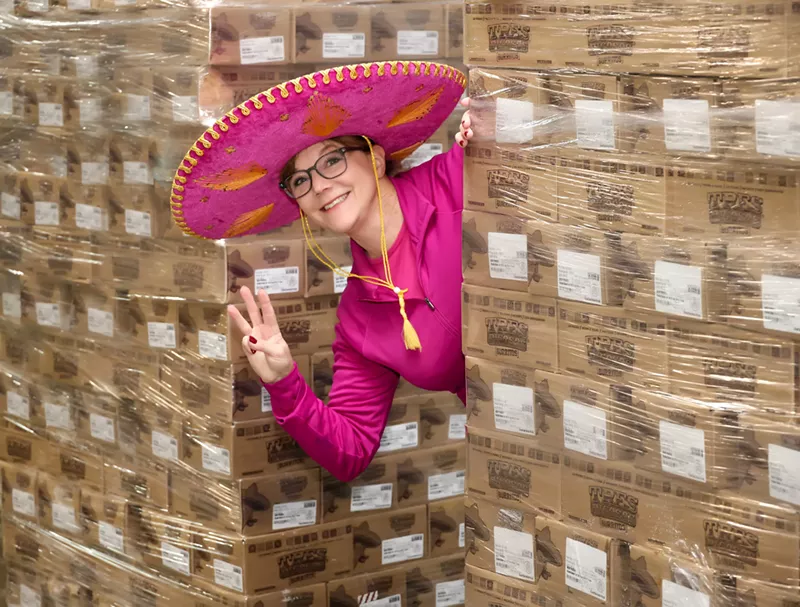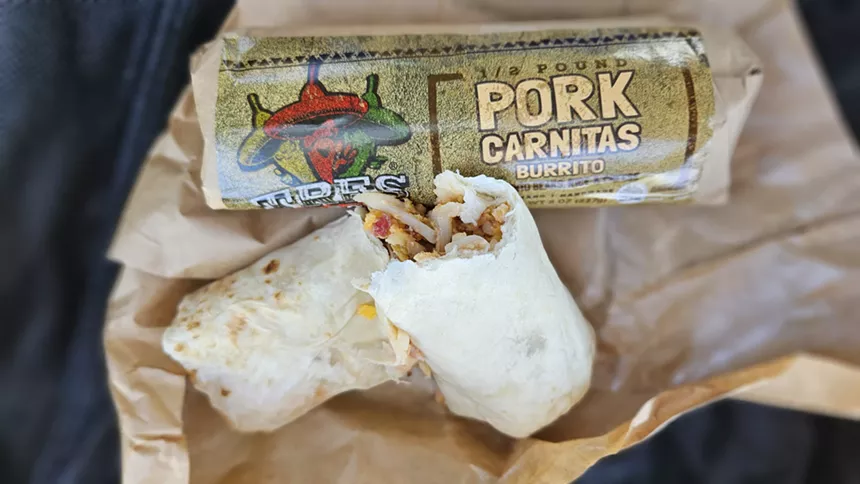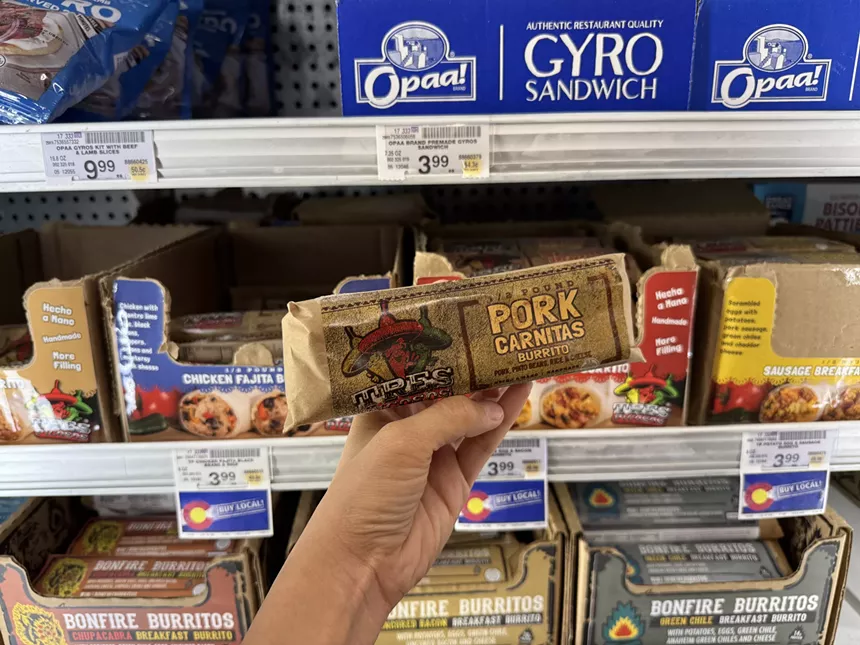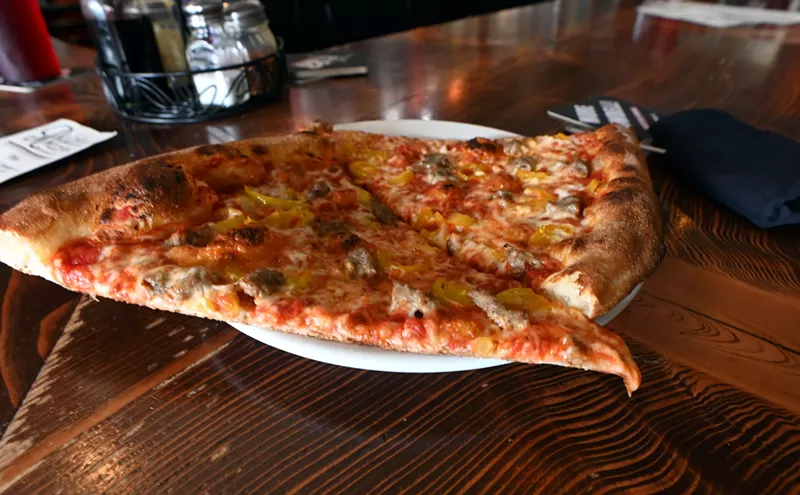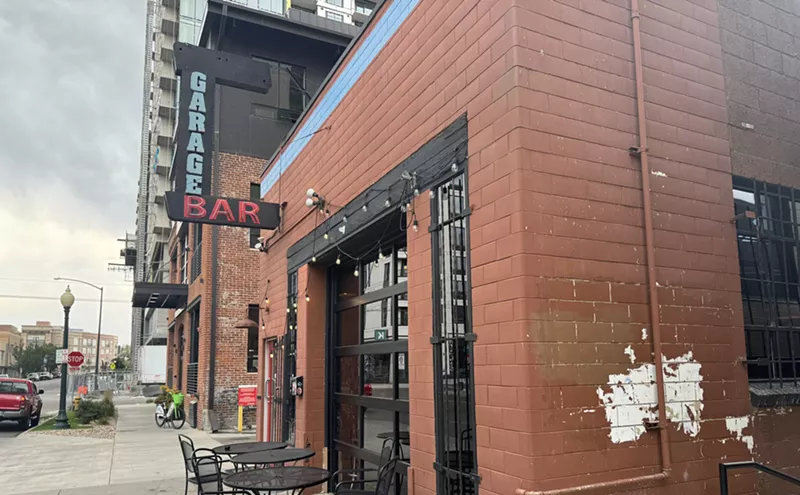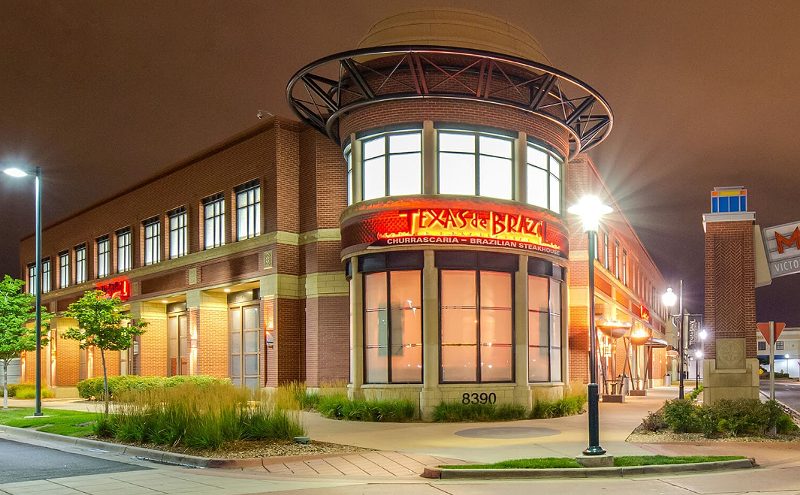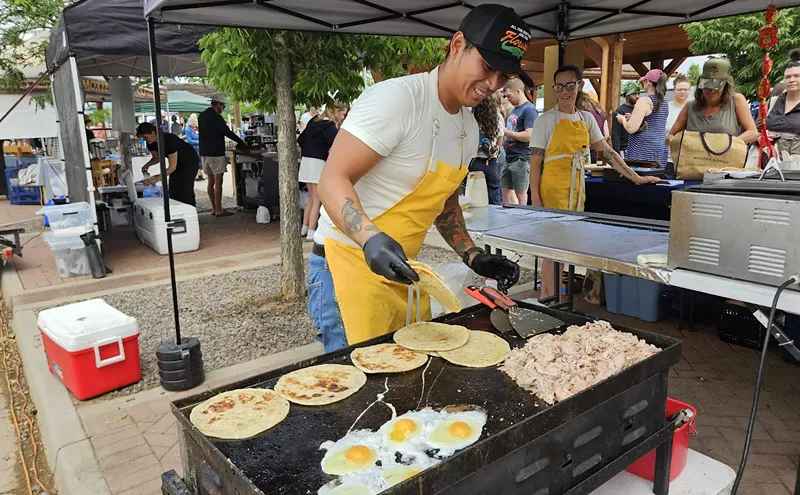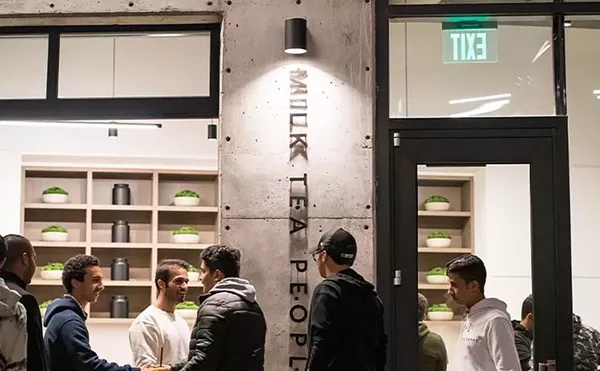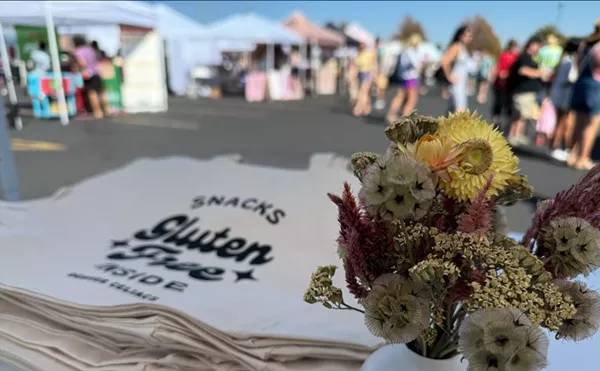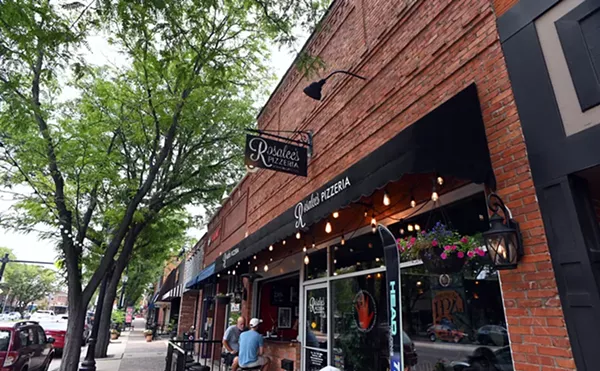In retrospect, the sombrero might have been a mistake. Jane Hartgrove, the CEO of Tres Picocos LLC, wears one in a video touting her line of frozen burritos that are now sold at Safeway, among other places. Despite the getup, she has no Mexican heritage in her family. "I'm just so grateful to be in this position to promote delicious Mexican food," she says.
And the Tres Picosos burritos are delicious. Back in 2005, under the name Tres Picos ("Three Peaks"), they were delivered to convenience stores and diners to sell from under heat lamps. At the time, the burritos were a product line under Hartgrove's husband's family company, Passport Food, which made and distributed everything from sushi and rice bowls to salads and burritos from its full production facility with 45 employees.
In 2008, Hartgrove changed the burrito brand name after spotting a vanity license plate with the word "Picosa" ("hottie").
And her company has since gotten very hot: In 2011, she spun off the line and launched Tres Picosos, taking the unofficial title of "la jefa."
Today, Tres Picosos burritos are carried by nationwide distributors that supply roadside chains like Maverik, Flying J and Pilot Travel Centers. Recently, over 120 Safeway stores in the Rocky Mountain region added the burritos, which are stocked in four varieties: Bacon Breakfast, Sausage Breakfast, Fajita Chicken and Pork Carnitas.
The line has nine flavors, ranging from breakfast sausage using Denver-based Polidori sausage, scrambled eggs, hash brown potatoes and melted cheddar in a mild green chile sauce, to pulled-pork carnitas with pinto beans, cilantro-lime rice, and cheddar cheese. They all feature wrappers from Colorado Tortilla that are specially designed to stay firm and chewy under prolonged heat.
When Tres Picosos first started, “our sales blend was about 65 percent breakfast and 35 percent lunch and dinner," Hartgrave says. "And now it’s more equal, now it’s about 50-50."
Although not a 100 percent clean or organic label, “it’s a very wholesome food with a minimum number of preservatives. In fact, the heat of the green chile sauce acts as a natural preservative,” she notes.
The burritos are good enough that Hartgrove doesn't need stereotypical props to grab attention. Still, she sprinkles her website with Espanol — she learned Spanish growing up in Florida — and shakes maracas to get attention at trade shows. Next year will be the fifteenth anniversary of her company, and she's planning a quinceanera celebration. "In the Mexican culture, it's really, really important to have a quinceanera. I'm just gonna wear a really big dress," she promises.
"I want to concentrate on what I do best, and that is building the brand and being the spokesperson for the brand, which clearly I love," she adds. "It's a ton of fun. I mean, I get to wear a sombrero. The Mexican culture gives me so much to work with. We've got maracas and Mexican flags and Mexican blankets and pinatas. It's just a blast."
Seeing companies using gimmicks and props to sell an ethnic product isn't new for Latinos. Think of the chihuahua featured in a TV ad campaign from 1997 to 2000 with a voiceover muttering "Yo quiero Taco Bell." Or before that, the racist-animated "Frito Bandito" who sang a traditional folksong with adulterated lyrics — "Ai, ai ai ai, I am the Frito Bandito..." — who pointed a gun at people and demanded they give up their Fritos.
In the years since then, we like to think America has become more sophisticated, particularly with our foodways. If sushi was weird and exotic in the '60s, today it's available at supermarkets everywhere. We understand that our country is part of a global web of cultures and commerce, and that culinary traditions are important to respect as much as we need to avoid certain slurs and acts that may have been acceptable decades ago.
And we love our Mexican food — made by Mexicans as well as others. So do we really need the stereotypes to sell it?
The Hispanic Restaurant Association, which is based in Castle Rock, walks carefully around the topic of cultural appropriation — although the organization says it would be happy to host a panel discussion about it with Westword, including representatives of Latin, Asian, Cajun and all types of cuisines. (And we'd be happy to co-host it!) "Our goal at the HRA is to educate, elevate and showcase the excellence within our community," HRA president John Jaramillo says, several times.
"I don't want to be negative about people. Somebody's trying to make a living, right? It's not right for me to, like, take somebody down," he explains. "Instead, let's educate people about good food — great food — and the evolution of food, and elevate everyone around us. That's our mantra as HRA."
According to Jaramillo, anyone selling Mexican food to mainstream consumers is doing a service to the Mexican food community — as long as the food is good — by opening up people's palates to the Latino culture. But when he goes to an industry event, he admits, "I see a bunch of people wearing these big sombreros...that's a caricature, right? Exaggeration obviously, right?"
Having food made by people outside the original culture is "a constant communication, it's how food evolves," says the HRA's Pablo Aya, who's not Mexican by birth — he was born in Colombia — but is considered an expert on Mexican food and has been a chef and consultant for restaurants, hotels and television shows. So-called "Mexican" food may not be "traditional" or necessarily "authentic," he adds, but "Taco Bell can be heavenly, or Tex Mex styles (which is often the variation we eat in Denver) can be great. We love it, right? It's not appropriation, it's an evolution."
Hartgrove, who says she eats her burritos three times a week, tips her hat — or sombrero — to that. "I have a deep love and respect for Mexican culture and food," she says. "I believe in celebrating it."

Audio By Carbonatix
[
{
"name": "GPT - Billboard - Slot Inline - Content - Labeled - No Desktop",
"component": "23668565",
"insertPoint": "2",
"requiredCountToDisplay": "2"
},{
"name": "STN Player - Float - Mobile Only ",
"component": "23853568",
"insertPoint": "2",
"requiredCountToDisplay": "2"
},{
"name": "Editor Picks",
"component": "17242653",
"insertPoint": "4",
"requiredCountToDisplay": "1"
},{
"name": "Inline Links",
"component": "18838239",
"insertPoint": "8th",
"startingPoint": 8,
"requiredCountToDisplay": "7",
"maxInsertions": 25
},{
"name": "GPT - 2x Rectangles Desktop, Tower on Mobile - Labeled",
"component": "24956856",
"insertPoint": "8th",
"startingPoint": 8,
"requiredCountToDisplay": "7",
"maxInsertions": 25
},{
"name": "Inline Links",
"component": "18838239",
"insertPoint": "8th",
"startingPoint": 12,
"requiredCountToDisplay": "11",
"maxInsertions": 25
},{
"name": "GPT - Leaderboard to Tower - Slot Auto-select - Labeled",
"component": "17676724",
"insertPoint": "8th",
"startingPoint": 12,
"requiredCountToDisplay": "11",
"maxInsertions": 25
}
]

